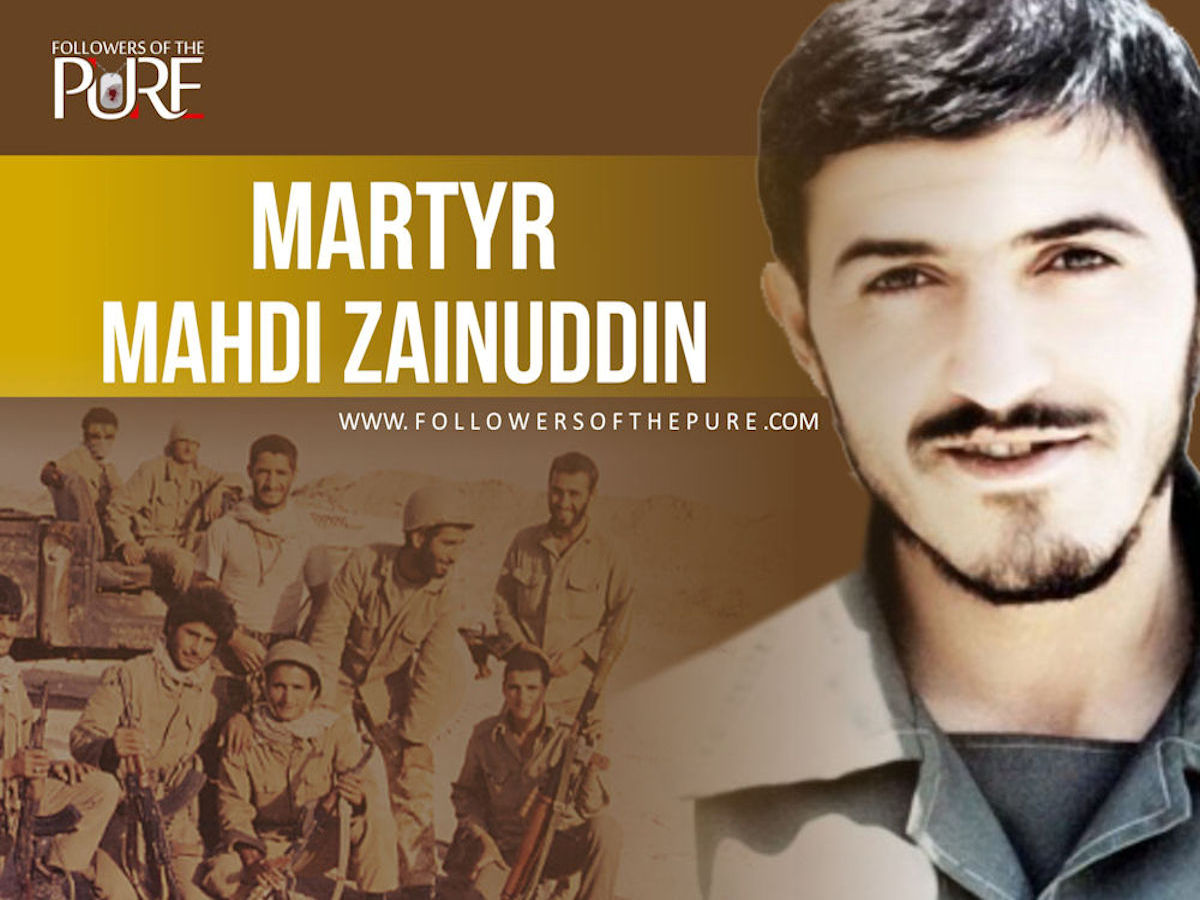The inspiration of martyrdom begins when the martyr makes his intention. This intention inspires the heart and soul of that person to express something which is greater than the individual is. Martyrs are a source of inspiration for the oppressed masses of the world. Their undoubted and continued struggle, devotion and self-sacrifice to save their nations from the shackles of oppression elevate them to the capstone of their lives. They inspire and vitalize others by serving as a role model. We have recounted lives of some of the brilliant martyrs committed to the inspired noble cause of Islam, it is dedicated to their memory and to the spirit in which they lived and worked to finally attain the supreme status of martyrdom.
Let us embark on a journey to unfold yet another exemplary martyr’s life that demonstrated zeal and commitment and was willing to fight to the death, in his journey towards martyrdom he endured a lot of hardships but emerged steadfast in his faith and achieved a supreme and enviable achievement, MARTYRDOM.”
Mahdi Zainuddin, an Iranian Major General who attained martyrdom during the Iran-Iraq war.
Mahdi Zainuddin was born on 11 October 1959 in a religious family in Tehran province. His mother was a Quran teacher, who instilled the love of Quran in his heart at a very tender age. His father was politically active and always despised the corrupt rule of Pahlavi dynasty.
Mahdi Zainuddin had an intensely inquisitive mind, when he entered elementary school; he spent all his free time in his father’s library.
Zainuddin was highly influenced by “Asadollah Madani” {Asadollah Madani was an Iranian politician, Shiites cleric, second Imam Jumu’ah for Tabriz and Representative of the Supreme Leader in East.} during his stay in “Khuram Abad”. High school expelled him for refusing to join the “Rastakhiz Party” {Resurgence Party also known as Hezbe-e-Rastakhiz party was founded on 2nd March 1975 by Mohammad Reza Pahlavi, the Shah of Iran.} Iran’s new single party, holding a monopoly on political activity in Iran, and to which all Iranian’s were required to belong. Since Zainuddin opposed the cruel regime of Muhammad Reza Pahlavi, he refused to be a part of it. However, he continued his education, graduated from high school, and Shiraz University accepted him.
During the same period his father was banished to “Saghez” {Kurdistan province} so, Mahdi gave up going to the University and continued his political activities more seriously. After a period, his father was banished to “Fars Province” once again. In November 1978, near the Islamic Revolution victory, his father went to “Qom” secretly, and moved his family to “Qom” city. Mahdi and his father with other political people continued their efforts in revolutionizing the city of “Qom”.
A University in France accepted Mahdi Zainuddin, but being a true patriotic he decided not to go, Imam Khomeini was urging young people to stay in Iran.
After the victory of Islamic Revolution in Iran, Mahdi Zainuddin joined the “Jahad-e- Sazandegi”“Jihad of Construction” or “Construction Jihad”. This was one of the organizations of the Iranian Revolution. This organization began as a movement of volunteers to help with the 1979 harvest, but soon took on a broader, more official role in the countryside. It was involved with road building, piped water, electrification, clinics, schools and irrigation canals. Mahdi was an active member of this organization.
He worked in the information section of “Army of the Guardians of the Islamic Revolution” Sepah or AGIR in “Qom”.
During the Iran-Iraq war, Mahdi worked with the “Dezful” and “Susangerd” AGIR, where he created epics in the battlefront. He was also the Commander of a very big battalion; named “17th Ali ibn Abi Talib” {17th Ali ibn Abi Talib division was a division of the army of Guardians of the Islamic Revolution during the Iran-Iraq war. It covered the cities of Qom, Zanjan, Seman, Markazi provinces.}
Mahdi Zainuddin participated in several operations;
1. Operation Beit-Al-Moqaddas: It was an Iranian operation conducted during the Iran-Iraq war. The operation was a success, as it achieved its standing aim of “liberation of Khorramshahr” and pushing Iraqi troops back to the border.
2. Operation Dawn 3 and Dawn 4: Valfajr: was Iran’s worst defeat out of all the Dawn operations. Eighteen thousand Iranian troops participated in this attack but withering Iraqi firepower in support of deeply entrenched troops slaughtered the advancing Iranians.
3. Operation Kheibar: was an Iranian offensive in the Iran-Iraq war. It was part of the Battle of the Marshes.
4. Operation Moharram: Launched on November 1 endeavored to liberate the last pockets of Iranian territory in Khuzistan still under Iraqi occupation. Saddam Hussein’s invasion of Iran had now transformed into the invasion of Iraq. Operation Muharram worried the Iraqi high command.
5. Operation Ramadan: was an offensive in the Iran-Iraq war.
In the fourth phase of Operation Ramadan, Mahdi Zainuddin became the new commander of brigade. After “Operation Muharram” and the expansion of IRGC brigades, this unit expanded to the 17th Ali ibn Abi Taleb Division. The Division proved to be capable during the war. It played a major role in the initial successful stages of Operation Badr.
Major General Mahdi Zainuddin was martyred on 18th November 1987 while moving from “Bakhtaran” to “Sardasht”, “Khuzestan” along with his brother on a reconnaissance mission. He is buried in the graveyard of “Ali ibn Jafer” in Qom.
“If you hear with the ears of your heart, history will narrate to you that story of the martyrs in the path of truth and justice with whose blood the border of the sky is covered. If you look at the horizon you will observe two kinds of redness; one the natural redness and the other that of the blood of the martyrs in the path of truth and justice.”

